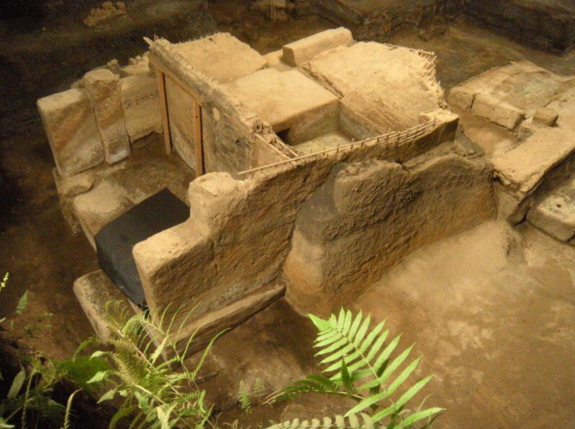Archaeologists uncover an ancient Mayan village buried under 17 feet of volcanic ash

Archaeologists call it the "New World Pompeii." Under 17 feet of volcanic ash, archaeologists back in 1978 discovered what is the "best-preserved Maya village in all of Latin America." And now, as excavation continues, countless clues as to what life there was like in A.D. 660 are emerging.
Recent research led by the University of Colorado, Boulder reveal Cerén, located in modern-day El Salvador, once was a farming village of about 200 people who largely lived free of the influences of the ruling elite. Twelve buildings have been uncovered so far, including "living quarters, storehouses, workshops, kitchens, religious buildings, and a community sauna," Archaeology says. The team has also discovered numerous "specialty items," such as jade axes, that they believe the villagers traded with elites to get.
Perhaps most notable, though, is the discovery of a roadway complete with footprints that preserved the last moments of frantic escape after the volcano erupted. "More than half of the footprints were headed south away from the village, away from the danger," Boulder anthropology professor Payson Sheets said in a press release. "I think at least some of them were left by people fleeing the eruption."
The Week
Escape your echo chamber. Get the facts behind the news, plus analysis from multiple perspectives.

Sign up for The Week's Free Newsletters
From our morning news briefing to a weekly Good News Newsletter, get the best of The Week delivered directly to your inbox.
From our morning news briefing to a weekly Good News Newsletter, get the best of The Week delivered directly to your inbox.
Excavations are expected to continue for decades to come.
A free daily email with the biggest news stories of the day – and the best features from TheWeek.com
-
 ‘Let 2026 be a year of reckoning’
‘Let 2026 be a year of reckoning’Instant Opinion Opinion, comment and editorials of the day
-
 Why is Iran facing its biggest protests in years?
Why is Iran facing its biggest protests in years?TODAY’S BIG QUESTION Iranians are taking to the streets as a growing movement of civic unrest threatens a fragile stability
-
 How prediction markets have spread to politics
How prediction markets have spread to politicsThe explainer Everything’s a gamble
-
 Nobody seems surprised Wagner's Prigozhin died under suspicious circumstances
Nobody seems surprised Wagner's Prigozhin died under suspicious circumstancesSpeed Read
-
 Western mountain climbers allegedly left Pakistani porter to die on K2
Western mountain climbers allegedly left Pakistani porter to die on K2Speed Read
-
 'Circular saw blades' divide controversial Rio Grande buoys installed by Texas governor
'Circular saw blades' divide controversial Rio Grande buoys installed by Texas governorSpeed Read
-
 Los Angeles city workers stage 1-day walkout over labor conditions
Los Angeles city workers stage 1-day walkout over labor conditionsSpeed Read
-
 Mega Millions jackpot climbs to an estimated $1.55 billion
Mega Millions jackpot climbs to an estimated $1.55 billionSpeed Read
-
 Bangladesh dealing with worst dengue fever outbreak on record
Bangladesh dealing with worst dengue fever outbreak on recordSpeed Read
-
 Glacial outburst flooding in Juneau destroys homes
Glacial outburst flooding in Juneau destroys homesSpeed Read
-
 Scotland seeking 'monster hunters' to search for fabled Loch Ness creature
Scotland seeking 'monster hunters' to search for fabled Loch Ness creatureSpeed Read